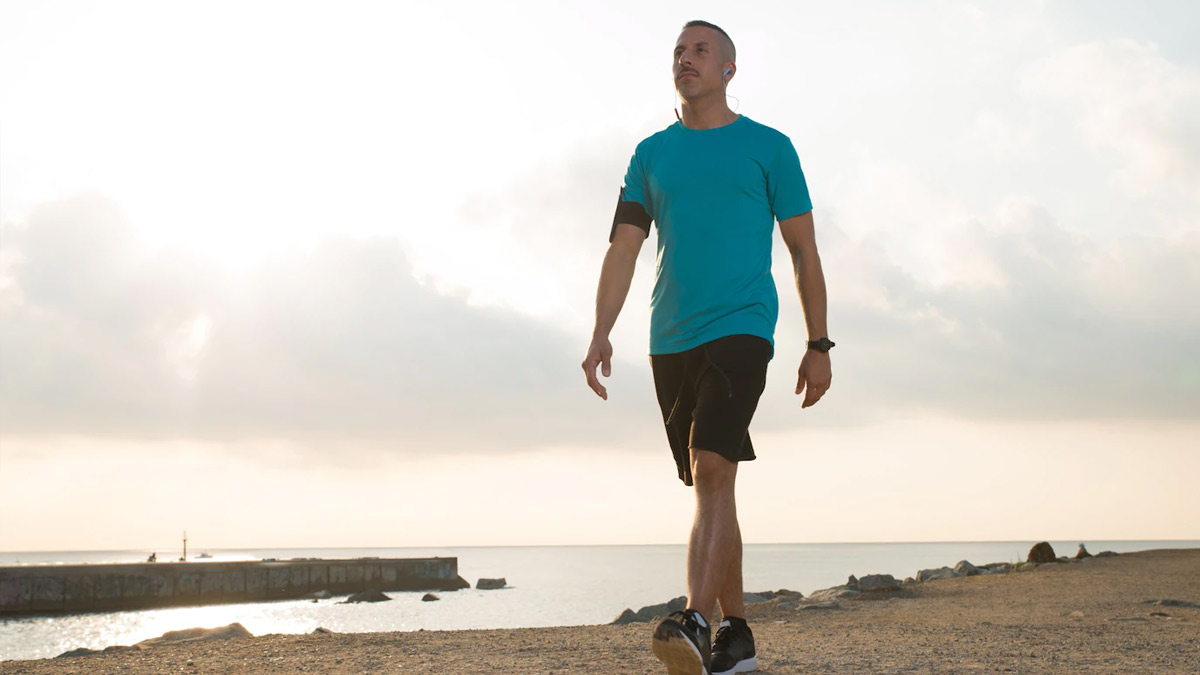
When it comes to staying active and mobile as we age or recover from injuries, walking is often recommended as one of the best forms of exercise. But does walking faster actually help improve mobility or is it just about clocking in the daily steps? In an exclusive interaction with the editorial team of Onlymyhealth, Akshit Khatri, Sports Officer, Sharda University - Noida, explained everything you need to know!
Table of Content:-
Why Does The Walking Speed Matter?
Walking faster isn't just about burning extra calories or reaching your fitness goals quicker. Research suggests that your walking speed is directly linked to your overall health and mobility. In fact, many physical therapists and geriatric specialists use walking speed as a clinical marker to predict an individual’s functional capacity, risk of falls, and even life expectancy.
According to a 2021 study published in the journal Gait & Posture, individuals who practice brisk walking tend to maintain better balance, joint flexibility, and muscular strength, all of which contribute to long-term mobility.
How Walking Faster Can Improve Mobility
Here’s how picking up your walking pace may actually enhance how well you move in daily life:
1. Strengthens Muscles and Joints
When you walk faster, your leg muscles, glutes, and core engage more intensely, compared to a slow, leisurely stroll. This increased engagement helps strengthen key muscles that support mobility, balance, and posture.

Also Read: When Menopause And Hypothyroidism Strike At The Same Time: How To Tell The Difference
2. Improves Cardiovascular Fitness
A brisk walk boosts your heart rate, improving blood flow to muscles and joints. Better circulation can reduce stiffness and keep your body more agile over time.
3. Enhances Balance and Coordination
Walking faster naturally requires better coordination, rhythm, and balance. Training your body to manage faster speeds can reduce the risk of tripping or falling, which is especially important as you age.
4. Increases Range of Motion
Speedier walking encourages a wider stride length and more joint movement, helping to preserve flexibility in your hips, knees, and ankles.
5. Boosts Mental Alertness
Studies show that faster-paced walking also stimulates the brain, improving cognitive functions related to movement planning and spatial awareness, both crucial for safe mobility.

Also Read: Is Gum Bleeding A Sign Of Leukaemia? Expert
Is Walking Faster Always Better?
While faster walking has clear benefits, it’s not suitable for everyone at every stage. Experts caution that if you have joint issues, chronic pain, or balance problems, you should increase your pace gradually. Overstraining can lead to injuries like muscle pulls or joint stress.
Start slow, then build up speed over time. Use a simple guideline called the “talk test”: during a brisk walk, you should be breathing heavier but still able to hold a conversation without gasping.
How To Safely Increase Your Walking Speed
Warm Up First: Start with 5 to 10 minutes of gentle walking to loosen your muscles.
Focus on Form: Keep your posture upright, swing your arms naturally, and avoid overstriding.
Take Shorter, Quicker Steps: This is more effective (and safer for your joints) than trying to take giant strides.
Practice Intervals: Alternate between a normal pace and faster bursts of walking to build endurance and speed.
Listen to Your Body: Stop if you feel dizzy, overly breathless, or experience pain.
Bottomline
Yes, walking faster can improve mobility, but it’s not just about speed for the sake of it. The goal is to challenge your body in a safe and sustainable way to strengthen muscles, enhance balance, and maintain joint health. For most people, especially older adults or those recovering from sedentary periods, integrating faster-paced walking into daily routines can be a simple, no-cost way to stay mobile and independent for longer.
[Disclaimer: Always consult with a healthcare provider or physiotherapist before starting any new exercise routine, especially if you have underlying health conditions.]
Also watch this video
How we keep this article up to date:
We work with experts and keep a close eye on the latest in health and wellness. Whenever there is a new research or helpful information, we update our articles with accurate and useful advice.
Current Version